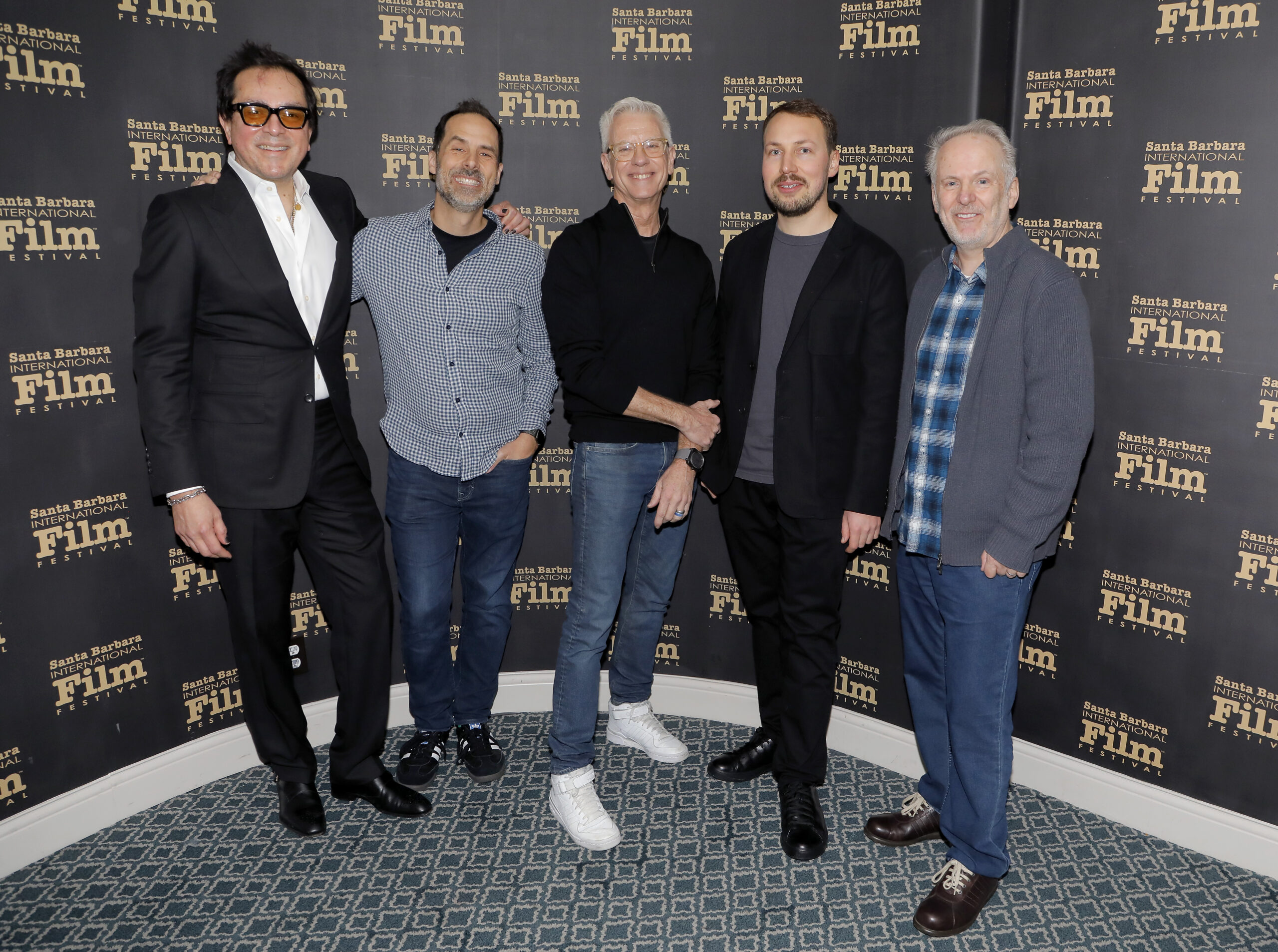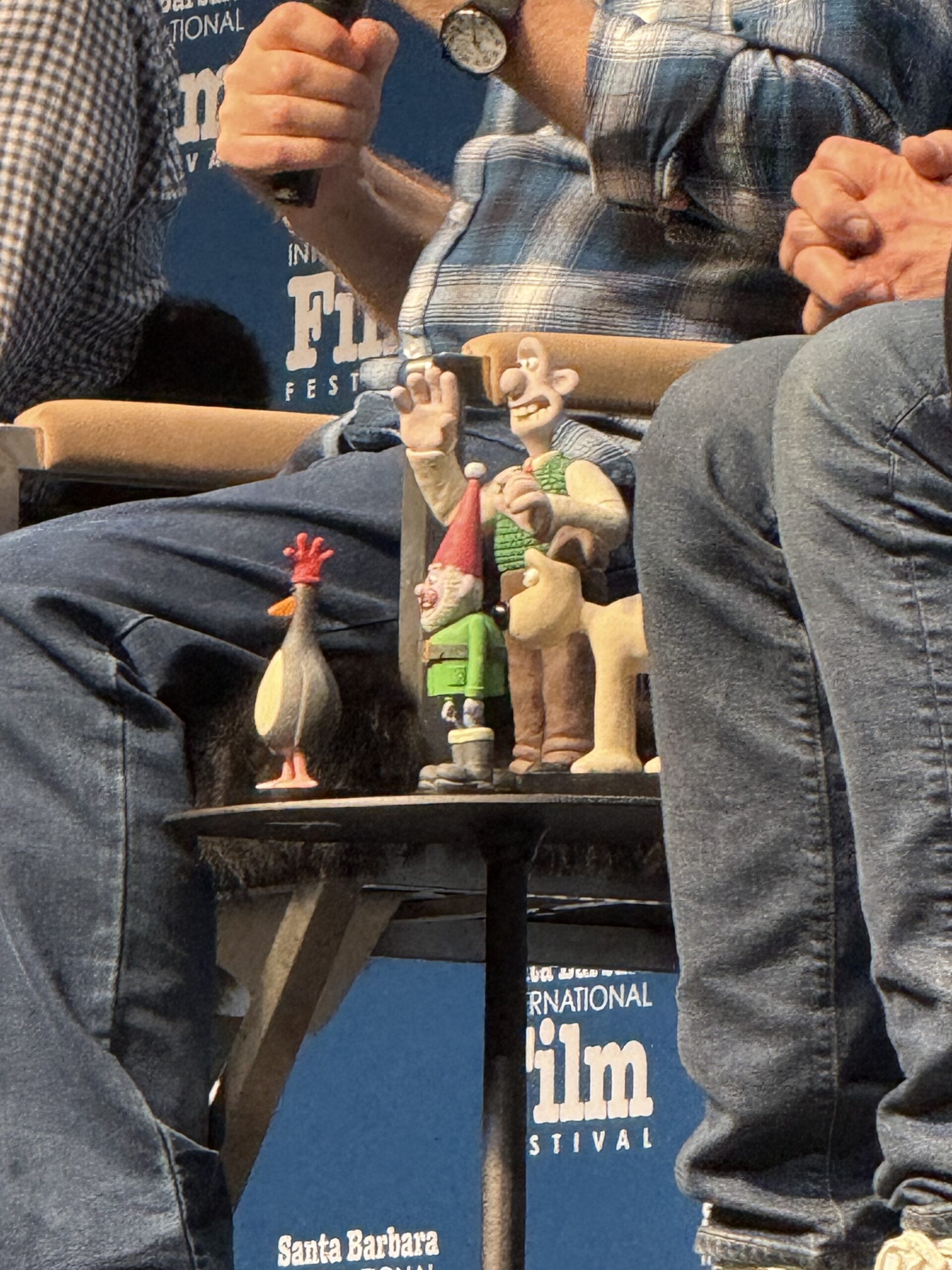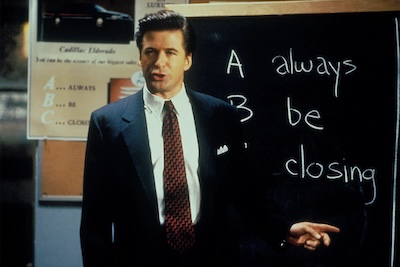Maria star Angelina Jolie received the Maltin Modern Master Award following an insightful panel focusing on the year’s Oscar-nominated animated films.
The 40th Annual Santa Barbara International Film Festival kicked off in earnest last night with the Maltin Modern Master Award presented to Maria star Angelina Jolie. The award, presented by Selma and Origin director Ava DuVernay, followed a conversation with moderator Leonard Maltin. It was an emotional evening for the star. Before the event, she walked the red carpet and greeted adoring fans. Some of those fans burst into tears when she approached.
During the presentation, Jolie reflected on her decades within the film industry as an actor and as a director. She frequently shared amusing anecdotes related to her body of work. Case in point: “I think back on my life and all the things I almost didn’t do, I almost missed. I said no to Tomb Raider the first time. Then they said you can travel the world and train with the British military. I said I will wear the shorts for the first five minutes of the movie and that’s it. That’s what happened.”
Jolie revealed that she started acting out of basic necessity and wanting to help her mother who struggled financially following her divorce from Jolie’s father, Jon Voight. She then went on to share amusing, candid, and insightful stories related to the projects for which she’s most famous, including her collaborations with directors Robert DeNiro and Clint Eastwood. Most audiences are familiar with her work in the live action Disney films Maleficent. There, Jolie shared the process of finding the character was mostly centered around her physical appearance, how to balance the other-worldliness of the character while still allowing her enough physical presence to carry the emotional sequences.
Angelina Jolie gets emotional remembering her mother while accepting the Maltin Modern Master Award at #SBIFF2025 pic.twitter.com/kGMbyE166M
— The Hollywood Reporter (@THR) February 6, 2025
But it’s her recent work in Pablo Larrain’s Maria which put Angelina Jolie back in awards contention. For her role as Maria Callas, Jolie received Best Actress nominations from Critics Choice and the Golden Globes organizations. She was, however, omitted from Oscars’ Best Actress five despite delivering a career-best performance. Still, the work speaks for itself.
“[Larrain] called me and asked me about Maria. He didn’t have a script. He just told me about his childhood, and his relationship to Maria Callas and music and opera and who she was,” Jolie recalled. When asked about the operatic performance sequences, Jolie said, “You can’t fake sing opera. Because you can see, it’s like fake screaming. Your body does something very specific. Your mouth, your throat… It’s not something you can kind of do.”

Animation Panel Highlights Oscar-Nominated Films
SBIFF director Roger Durling moderated a fascinating and insightful panel featuring directors from four of this year’s Oscar-nominated animated films. The panel included Kelsey Mann (Inside Out 2), Nick Park (Wallace & Gromit: Vengeance Most Fowl), Chris Sanders (The Wild Robot), and Gints Zilbalodis (Flow). Memoir of a Snail‘s Adam Elliot could not attend due to scheduling conflicts.
Inside Out 2
Durling perfectly moderated the event with a deep knowledge of the filmmaking process coupled with a love of animation. Starting with Mann, Durling immediately called to attention Inside Out 2‘s richly cinematic scope, specifically its 2.39 aspect ratio and usage of color representing Anxiety’s emergence. Mann shared that he received great advice from peer Pixar director Dan Scanlon (Monsters University) about carefully selecting the aspect ratio to fit the needs of the film.
“I paused, and I thought about it. Riley’s getting older, and her world is expanding so I thought it’d be really cool if the aspect ratio expands along with her. Plus, I can fit all those emotions in one shot,” Mann explained.
Mann revealed that the film’s production designer Jason Deamer wanted to visually illustrate Anxiety’s takeover of Riley’s consciousness. Therefore, the color orange isn’t seen until Anxiety appears onscreen, becoming more prevalent as Anxiety gains control. Mann also discussed shaping Anxiety throughout the filmmaking process, evolving her from a standard villain to an All About Eve-like figure. He worked with clinical psychologist Lisa DeMore to help understand and evolve Riley’s emotions throughout the film.
Mann also revealed his deeply personal connection to Inside Out 2.
“I’ve got teenagers. One of the first drawings I did on the film was a really tiny family island and a gigantic friendship island. The shift from family to friends is all about our survival because you’re a teenager switching from being taken care of to taking care of themselves,” Mann said. “So you kind of are actually pushing away your caregivers so that you can survive and get the skill sets to survive on your own.“
Wallace & Gromit: Vengeance Most Fowl
Roger Durling’s questions continued with legendary Wallace & Gromit director Nick Park whose brought working models from the film. Durling started the segment with a tribute to the late Peter Sallis who voiced Wallace until his passing in 2017. Park attributed the future of Wallace & Gromit to voice actor Ben Whitehead, who was able to adapt to Sallis’s vocal style. Park also talked about bringing

back the celebrated Feathers McGraw to heighten the film’s sinister elements.
“Originally, it was actually the idea was just a 30 minute idea, or Wallace inventing a small gnome or a robot gnome back there to help Gromit in the garden. There was lots of fun about the idea, but it was missing that thing that Wallace & Gromit usually has a lot of — a sinister element,” Park explained. “It was just like a flash of lightning. It wasn’t a desire to do a sequel to The Wrong Trousers. It was more to satisfy a story problem, the lack of a sinister element. There was Feathers on the shelf with a history with Wallace and Gromit and a vendetta. That really put something into the story.”
Park went on to describe the restraint used when animating Feathers. He and co-director Merlin Crossingham sought nuanced, minimalist movements for the character. They even debated how often he should blink, referencing a Hannibal Lecter-like stare at one point. He also discussed the film’s lighting style, referencing Alfred Hitchcock’s Rebecca as an inspiration.
Durling then commented on the many cinematic inspirations that find their way into the finished product. Park provided that was fully intentional.
“We tend to just jump around from different genres. It’s often when you’re setting up a shot, and you just think in the moment that it’s a bit like that movie,” Park shared.</span> “There was Aliens, you know, with the the detector going off, the bleeping on the street, but here, it’s the gnomes that are coming.”
The Wild Robot
The Wild Robot director Chris Sanders spoke about his film’s painterly quality after Durling remarked that you could see brush strokes in the animation. Sanders described his initial interaction with Peter Brown’s original novel. Since the novel remains popular with younger audiences, he needed to find a way to ensure adult audiences engaged with and related to the film. He referenced recent innovations at Dreamworks Animation in breaking free from a heavily CGI look. He cited the legendary Japanese animator Hayao Miyazaki and his gorgeously rendered forests as a particular influence on this evolving painterly style heavily leveraged in The Wild Robot.
Sanders also raved about his collaboration with Oscar-nominated composer Kris Bowers. He also learned how past experiences on Lilo and Stitch taught him that music can support tricky plot mechanics.
“We do have these wide-open spaces where the music becomes the voice of [The Wild Robot]. That’s another thing I learned from Alan Silvestri on LIlo and Stitch. He was looking at the storyboard, and he said I totally get this. I’m following this perfectly. There’s one thing I don’t see. Where is that moment where Stitch goes from bad to good? Where’s the shift?” Sanders recalled. “We’d left it offscreen because we didn’t know how to write it. Alan said put it on screen, and I’ll say it. The dot of realization broke across my brow, and I understood music is a storytelling element. It’s not just a decoration of time. It can do some of the heaviest lifting story-wise. So that was another reason I was very, very excited about handing that immense responsibility to Kris Bowers.”
Sanders also revealed the process of working with Oscar-winning actress Lupita Nyong’o who very carefully decided on engaging with the project. She wanted to be a strong collaborator in the process and worked with Sanders and others to develop the character of Roz the robot. As Roz learns and changes throughout the film, Nyong’o adapted three different vocal styles for her dialogue. Phase One referenced a Siri-like approach to the material. Phase Two and Three materialized a more relaxed approach to the voice work, including the usage of contractions.
“That was one of the most intense but rewarding collaborations I’ve ever had,” Sanders raved.
Flow
Flow received Oscar nominations for International Feature as well as Animated Feature. Director Gints Zilbalodis explained to Durling that the film boasts a circular structure, starting and ending with the central cat looking into water. Zilbalodis wanted to visually reflect how the characters changed throughout the film. He initially thought the cat would return to its home by the end of the film. He quickly realized that the journey didn’t make sense logically, but the visual motif would more convincingly convey the same sensibility.
“Having a visual motif can actually be a stronger way of conveying that. It’s also not random that it’s water that they’re looking through because the water represents the cat’s emotions. When the cat is afraid of these other animals, the water is very scary and aggressive,” Zilbalodis explained. “When it starts to open up to them, the water calms down and becomes peaceful and tranquil. So we don’t have dialogue, and we have to use these kind of visual cues or sound cues to explain or show the emotion that they’re feeling.”
He also explained how the cat’s natural instincts reflect his running away from problems. When the waters rise, he just continues to climb, waiting for it to go away. When other animals fight on a boat, the cat climbs the mast and waits for the issue to resolve. Eventually, the cat realizes it can’t continue to escape its fears and dread. That realization send the cat and the film into a magical realism direction.
Durling also asked about the tendency for modern animation to reflect animals in more of a naturalistic state, rather than giving them overly human qualities. Zilbalodis revealed the inspiration for the characters came from personal experiences.
“The cat and the dog are inspired by real pets I’ve had, and I just find them really interesting and funny and emotional. So, I don’t feel like we need to change them in any way to tell a story. It was important to create a very subjective experience that you feel like you are the cat in this film and see everything and learn information in sync with the cat,” Zilbalodis explained, also referencing the difficulty in animating the animals. “It’s really challenging animating cats because they don’t seem to follow the rules of physics. They’re very stretchy and bendable and almost act like liquid sometimes. It’s very hard to pin them down so it was quite challenging.”





![‘Pirates! The Penzance Musical’ Breakout Star Nicholas Barasch Discusses Performing On The Tonys With Seven Stitches On His Face [VIDEO]](https://thecontending.com/wp-content/uploads/2025/06/Pirates0011r-120x86.jpg)



